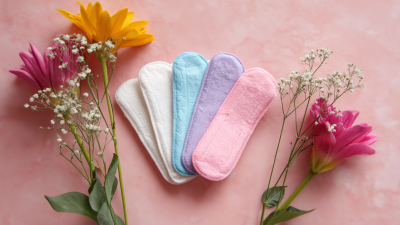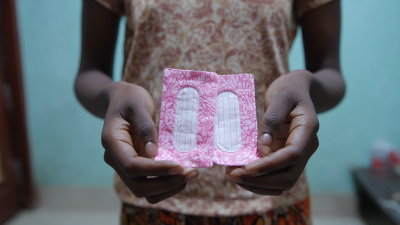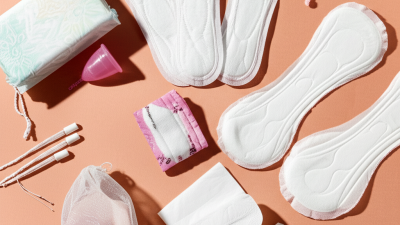
How to Choose the Best Sustainable Sanitary Pads for Your Period Health in 2023 with Proven Eco-Friendly Benefits
In the quest for a healthier lifestyle and a more sustainable planet, choosing the right menstrual products has never been more critical. Sustainable Sanitary Pads are at the forefront of this movement, offering an eco-friendly alternative to conventional pads that often contribute to environmental pollution. As we step into 2023, understanding the benefits and features of these products is essential for making informed choices that align with both your period health and environmental values.
The evolution of sustainable menstruation products is reshaping the landscape of personal care, with innovative designs and materials that prioritize both comfort and planet-friendly practices. From organic cotton options to biodegradable materials, the range of available Sustainable Sanitary Pads is growing, providing diverse options for consumers keen on reducing their ecological footprint. These products not only offer tangible benefits for users, such as reduced irritation and enhanced comfort, but also play a critical role in promoting a more sustainable approach to feminine hygiene.
As we look toward 2025 and beyond, the importance of selecting Sustainable Sanitary Pads will continue to rise, encouraging a broader shift in consumer behavior. This guide will help you navigate the myriad of choices available, making it easier to select products that are not only beneficial for your health but also contribute positively to the environment. Embrace the change and empower yourself with knowledge about sustainable menstruation options that reflect the values of the modern era.

Choosing Organic Materials: What to Look for in Sustainable Sanitary Pads
When selecting sustainable sanitary pads, the materials used are of utmost importance. Look for organic cotton, which is grown without harmful pesticides and synthetic fertilizers, ensuring a safer option for your skin and the planet. Additionally, bamboo is another excellent choice due to its fast-growing nature and natural antibacterial properties. These materials not only reduce your carbon footprint but also promote better menstrual health.
Tips: Always check for certifications like GOTS (Global Organic Textile Standard) to ensure the pads meet eco-friendly standards. Look for products that emphasize biodegradable components, which can decompose naturally, preventing plastic pollution. Moreover, avoid pads with synthetic fragrances and chlorine bleaching, as these chemicals can irritate the skin and are harmful to the environment.
Choosing the right absorbency is also crucial. Sustainable pads come in various absorbency levels, so consider your flow and select accordingly. Brands that focus on eco-friendly practices often provide clear labeling, making it easier to choose products that align with your health and environmental values. By making informed choices, you can support sustainable menstruation while maintaining your health.
Environmental Impact: How Eco-Friendly Pads Reduce Waste and Pollution
 The environmental impact of traditional sanitary pads is significant, contributing to considerable waste and pollution. Many conventional pads are made from synthetic materials, including plastics, which can take hundreds of years to decompose in landfills. Each year, an estimated 20 billion sanitary products are disposed of, leading to a staggering accumulation of non-biodegradable waste. This not only burdens landfills but also threatens wildlife and marine life as these materials break down into smaller microplastics, entering our ecosystems.
The environmental impact of traditional sanitary pads is significant, contributing to considerable waste and pollution. Many conventional pads are made from synthetic materials, including plastics, which can take hundreds of years to decompose in landfills. Each year, an estimated 20 billion sanitary products are disposed of, leading to a staggering accumulation of non-biodegradable waste. This not only burdens landfills but also threatens wildlife and marine life as these materials break down into smaller microplastics, entering our ecosystems.
In contrast, eco-friendly sanitary pads are designed to mitigate these adverse effects. Made from natural, biodegradable materials such as organic cotton and hemp, these pads break down more readily in the environment. Some brands even use innovative designs that incorporate compostable materials, enabling users to dispose of them more sustainably. By choosing eco-friendly options, individuals can significantly reduce their personal contribution to waste and support a cleaner, healthier planet. Transitioning to these sustainable alternatives not only promotes personal health but also fosters a collective responsibility towards environmental stewardship.
Durability and Absorbency: Finding the Right Balance for Your Needs
When selecting sustainable sanitary pads, durability and absorbency are critical factors that can significantly influence your overall experience. Sustainable options are now available in various materials, each offering unique benefits.
For instance, organic cotton pads are known for their superior absorbency and softness, making them ideal for heavy flow days. On the other hand, reusable cloth pads can provide long-lasting durability, as they can withstand numerous washes while still maintaining their effectiveness. Hence, balancing these two aspects is essential for personal comfort and eco-friendliness.
Moreover, consider the pad's design and fit. Some brands emphasize not just absorbency but also a snug fit to prevent leaks, which enhances your confidence during your period. For those worried about sustainability, look for pads that use biodegradable materials or those made from recycled products. This ensures that your choices contribute positively to the environment without compromising your health or comfort. By prioritizing both durability and absorbency, you can make an informed decision that aligns with your values and meets your individual needs.
Cost-Effectiveness: Evaluating the Long-Term Savings of Sustainable Options
When considering sustainable sanitary pads, one of the key factors to evaluate is cost-effectiveness. While the initial investment in eco-friendly options may seem higher, the long-term savings often outweigh the upfront costs. Sustainable sanitary pads are designed to be more durable and can significantly reduce the need for frequent purchases. This longevity parallels trends seen in other sustainable products, such as artificial grass, which not only provides immediate maintenance savings but also contributes to lower ongoing expenses by eliminating the need for regular upkeep.
Additionally, the eco-friendly benefits of sustainable sanitary pads include reducing waste and minimizing the environmental impact associated with traditional disposable options. As consumers become increasingly aware of the environmental implications of their choices, those who invest in sustainable hygiene products may find themselves saving money while also contributing to a cleaner planet. This shift towards sustainability echoes the broader movement in various industries, where companies are seeking to balance cost savings with social responsibility, thus enhancing customer loyalty and brand reputation in the process.
User Reviews: Real Experiences with Top Sustainable Sanitary Pad Brands
User reviews play a pivotal role in assessing the effectiveness of sustainable sanitary pads, especially as more consumers prioritize eco-friendly options. According to a report by ResearchAndMarkets, the global market for eco-friendly personal care products is projected to reach $30 billion by 2024, driven by increased awareness of sustainability. Many users have shared their experiences with top sustainable sanitary pad brands, highlighting comfort, absorbency, and odor control as key factors. Brands like Thinx and Natracare are frequently recommended for their organic materials and biodegradable packaging, setting a high standard for menstrual health without compromising environmental values.

Another significant insight comes from a survey conducted by the International Journal of Environmental Research and Public Health, which found that 62% of women reported improved skin comfort when switching to organic pads. Real experiences often reflect these findings, with users noting a reduction in allergies and irritation compared to traditional products. Such testimonials not only acknowledge the benefits of sustainable choices but also encourage a shift within the personal care industry towards more responsible manufacturing practices. As we navigate 2023, it's clear that user feedback will continue to shape our understanding of the best eco-friendly sanitary options available.
Related Posts
-

How to Choose the Best Plastic Free Sanitary Pads for Sustainable Living
-

7 Facts About Best Sustainable Sanitary Pads That Every Global Buyer Should Know
-

The Future of Eco Friendly Menstrual Health Solutions
-

Ultimate Checklist for Choosing Sustainable Sanitary Pads: Key Considerations and Statistics
-

How to Choose the Best Recycled Sanitary Pads Fiber for Eco-Friendly Menstrual Care
-

How to Choose the Right Menstrual Materials for a Comfortable Experience



